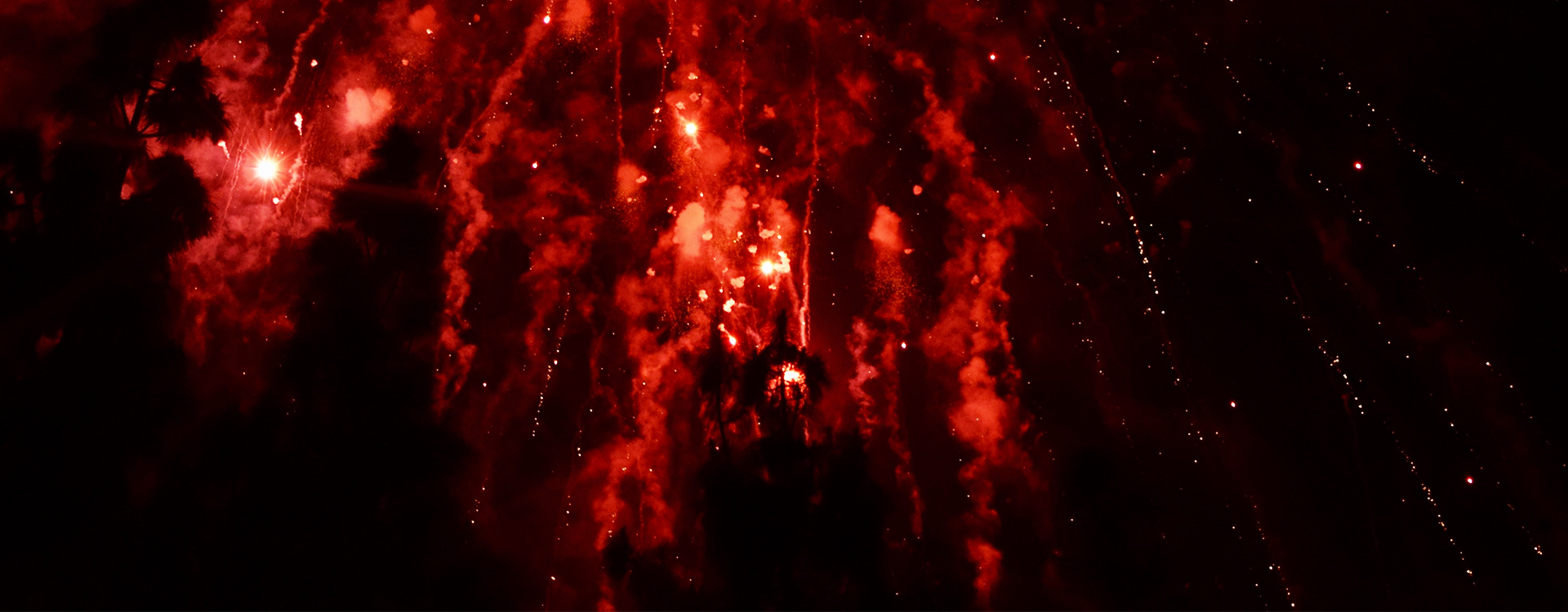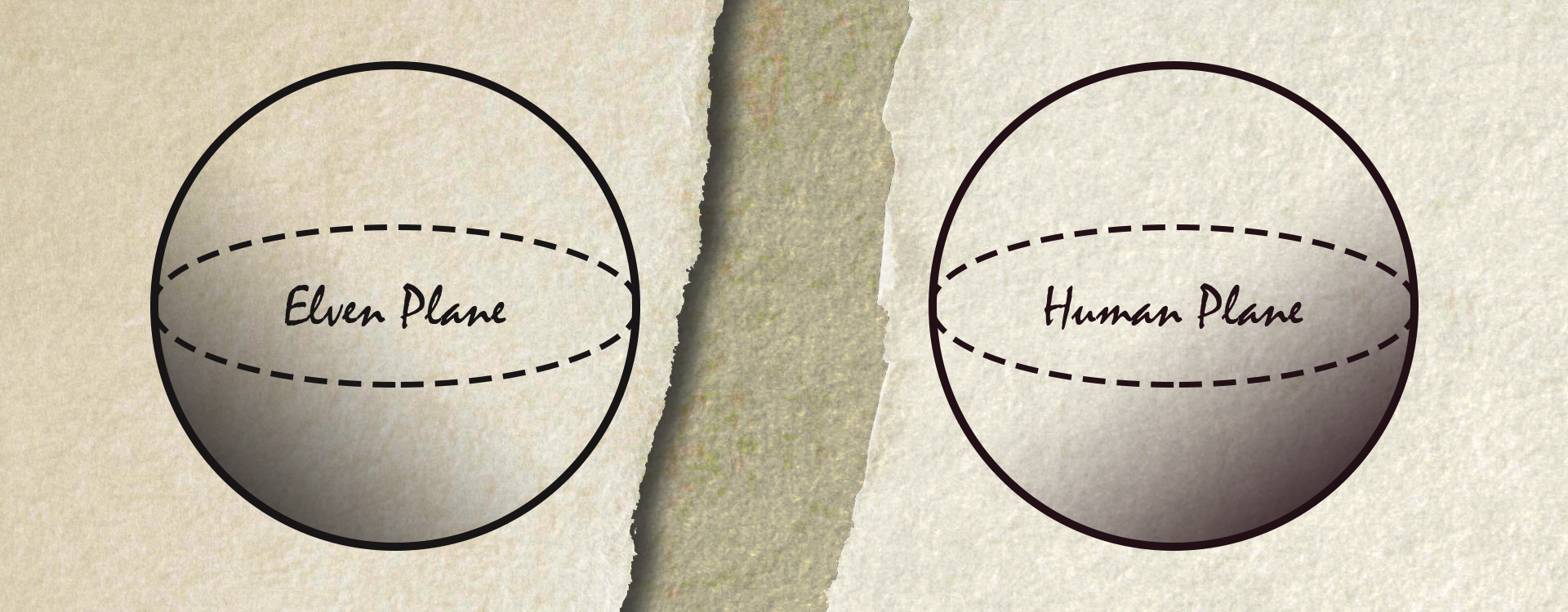The Separation
In an instant, all the connections forged in the preceding century collapsed. An entire world and its people lost to us, and we to them. Not to speak of countless communities left divided across the Planar Sea, with no way to reach out. It is, and shall hopefully remain, the greatest tragedy of the modern era.The Separation was an event occurring in 326 AC, wherein the human and elven planes were separated and all links between them severed. Despite a low casualty count, it is considered the worst event in the Post-Collision era, and was a catalyst for the Vosti Civil War.
The Post-Collision Era
The Collision had brought many changes to the ways of life for all across Abravost, chief amongst them being the introduction of elves to a land where they had previously never existed. Conflict would erupt in spurts, particularly in The Vosti Empire. Notable events of the early era include the (conflict-ridden) secession of the elven state of Waal Zaimyatl from the Empire in 107 AC, and the establishment of trade between the Empire and the Republic of Skarhu. In the 3rd century AC, academics in Waal Zaimyatl were able to develop portal technology, which allowed individuals to travel between the elven and human worlds. The boons this brought to all of Abravost are immeasurable, with communities who had been separated finally being able to reconnect, solving many mysteries surrounding the fates of family members and communities. These portals also helped close the gap between eastern Abravost (The Vosti Empire and Waal Zaimyatl) and the Republic of Skarhu, shortening months long voyages by sea to a few weeks travel by land. With the two worlds closer than ever, peace reigned. Even in regions which disliked the influence of the elven world on them, many had to admit that they were better off for the knowledge shared. Many events took place to promote cross-planar co-operation and solidarity, such as regular summits held in the court of an elven emperor which invited the leaders of all Abravosti countries.The Separation
Only moments into the sermon, the disciple of Wisdom seemed struck and collapsed. Sitting near the front as usual, I rushed to their aid. They were fine physically, but mentally afar, a blubbering mess. A calamity greater than any ever levelled against the mortal realms. An end to the peace we had grown used to, and the start of centuries of turmoil. I know not what the disciple meant. I can only hope that it was a fit of lunacy, and not of prophecy.It was an ordinary day, and one on which many did not personally experience anything out of place. This is especially true in large swaths of Skarhu and in the southern regions of Vost, where portals were less frequent. In places were portals were common and heavily relied upon, however, the effects were instantaneous and devastating. At midday, all portals in Abravost self destructed, twisting and warping their immediate surroundings before disappearing in small explosions. Some who were mid-transit found themselves torn asunder between the two planes and the sea betwixt, while others found themselves violently thrust through to the other side. Many buildings near to or housing portals crumbled and collapsed, sending tremors through the lands nearby. This is all that can be considered part of the Separation, rather than as a consequence of it. For many citizens, especially those in rural areas far from portals, its effects would not be felt for days or even weeks.
Consequences
The Vosti Empire
For a few days, the Vosti military was able to continue running the empire without alerting the common man to the loss of the imperial family, though internally they quarrelled over what actions to take. Some sections worked to find a way to reopen the portals, while others bribed scholars to determine the closest imperial relative while letting no outsiders know of the query. As the date of the Empress' planned return came and went, the people panicked. Many nobles close to the Empress found their own families shattered, such as was experienced by the Duchy of Sinofis in the far north. Chaos erupted amongst both the high and lower classes, and many began to angle for the imperial throne in her absence. It took a month for multiple scholars, each paid and bribed by separate groups of interest, to determine that Marchioness Askila of Ilnon - herself having lost her parents to the Separation - was the next in line for the throne. Her shock at this, and her inexperience with leadership, scared many. She promptly married an ex-military commander named Treveon, with the intent to merge the fragmented military back into imperial loyalty, and ensure the obedience of her subjects. This initially went rather well, but a series of poorly received decisions (such as that of making Treveon co-monarch, and adopting a military commander to act as her heir in place of her young son) caused great conflict, resulting in the disastrous Vosti Civil War in 330 AC. In short, the northern territories rebelled against the throne, forcing a 6 year extended conflict and ending in the north becoming the independent Kingdom of Telziad.Republic of Skarhu
As Skarhu had only been represented by its Foreign Minister and their family, the impact on the government was comparatively minor. What caused issues was the loss of the portals, which had helped many farmers access the eastern markets far easier. Many farming families were left separated across continents, and the Skarhan government soon made pledges to support any family affected. These measures were intended solely for Skarhan citizens, but would soon encompass a number of Vosti citizens who had found themselves on the wrong side of portals and needed transport home, as well as a variety of elven refugees stuck on the wrong side. News of this support soon travelled abroad, and Skarhu found itself being begged for help by a number of island communities south of Abravost, which were finding their needs ignored as the mainland devolved into the chaos of civil war. Skarhu stepped in to provide support, prompting frustration from the Vosti Empire for their 'meddling in Vosti affairs'. The war of words went back and forth for over a year before the republic, in conjunction with existing local leaders, declared the islands to be an integral part of Skarhu. This caused the war of words to escalate into actual war, starting in early 331 AC. This Skarhan-Vosti War lasted mere months, with Skarhu's superior navy thoroughly defeating the Vosti navy and blockading their ports in Shonyul, which hurt Vost's ability to supply troops fighting on its eastern front in the ongoing Civil War. In the Vosti surrender, all their island territories - including those in its far north - were ceded to Skarhu.Waal Zaimyatl
Waal Zaimyatl was perhaps the worst hit of the three countries. With most of its parliament lost to the other side of the broken portals, the Deputy Prime Minister became the Prime Minister, and many members of local government were hastily promoted to fill the vacancies. The grief of the country was immense, and aided little by the large presence of now stateless elves - those who called the elven plane home, and had been trapped on the other side. This refugee population would only grow as more from across the continent would flock to Waal Zaimyatl seeking aid. National grief turned to a desire for blame, and with time this was directed at the Vosti Empire, for being the cause of the summit which lost them so many. Border troubles broke out in earnest, and Waal Zaimyatl would side with the northern rebels in the Vosti Civil War. While the southern border remained stubbornly in the same place, the northern border pushed notably westward with the permission of the newly formed Kingdom of Telziad, and peace slowly returned.Summit, 326 AC
The summit in 326 AC was to be a tense one. The Vosti Empire and Waal Zaimyatl had been eyeing their southern border with disdain for years. Empress Ila and President Hómjol intended for the summit to help ease their concerns, aided by President Tahla Mohil of Skarhu. Only a few days before the summit was due to begin, Mohil fell ill. Unwilling to have Skarhu unrepresented, the Foreign Minister and his family were sent instead. Empress Ila brought her entire family and many members of the Vosti nobility, leaving control in the hands of her trusted advisers and military generals. President Hómjol arrived at the summit with large swaths of the Waal Zaimyalkee parliament in attendance, though Deputy Prime Minister Tánum remained in the country to ensure things ran smoothly.
Palace of Fine Arts by derwiki
Divine Causes
Much like the Collision centuries before it, the Separation was caused by the actions of The Divinities, a pantheon of deities who can manipulate the fabric of the worlds. The 'blame' for the Collision is usually placed at the feet of the Duality of Change, who is believed to have tricked some of their fellows into manipulating the positions of the planes within the Planar Sea which kept them separate. Which deity is responsible for the Separation isn't known. Some suggest it was The Mother Herself, who awoke from centuries of slumber, outraged that Her creation had been so needlessly sullied by the intertwining of the human and elven planes. The strange visions many disciples experienced prior to the event are believed to have been warnings that The Mother was soon to awake - warnings which were too little, too late.
Fireworks by davidgarry
A Vosti War
The Vosti Civil War was a 6 year long conflict within the Vosti Empire, which initially began as an effort to replace Empress Askila III and Emperor Treveon I with a less awful alternative. Until 333 AC it was widely considered that Duke Dravulean of Sinofis, primary leader of the northern rebellion, would serve in that position. His death at the Siege of Robardon caused many changes within his forces, and eventually lead the rebels to 'settle' for becoming a state independent from the Empire. Despite being called a civil war, it would include all Abravosti nations at one time or another, either as direct combatants and through aid. Its conclusion left the Empire vastly weakened, and many point to it as the source of many current problems in the nation.
Grand Master's Palace by manfredrichter
Planar Magic
Once a booming field, the Separation decimated the study of Planar Magic. Some of this is due to the loss of countless records, which had been housed in the same areas as the portals which collapsed. Some is due to the loss of the foremost practitioners in many of its fields, either to the other side or to the collapses. The rest can be attributed to the difficulty in studying the fabric between worlds when there is no other world to compare it to. The sole type of Planar which has remained widespread is Necromancy, possibly owing to it being discovered far closer to the Collision and not requiring another plane to utilise effectively. Some academics have quietly suggested studying necromancy in an effort to better understand the Planar Sea, but this has yet to happen in any official capacity.
Smoke by Free-Photos




Comments